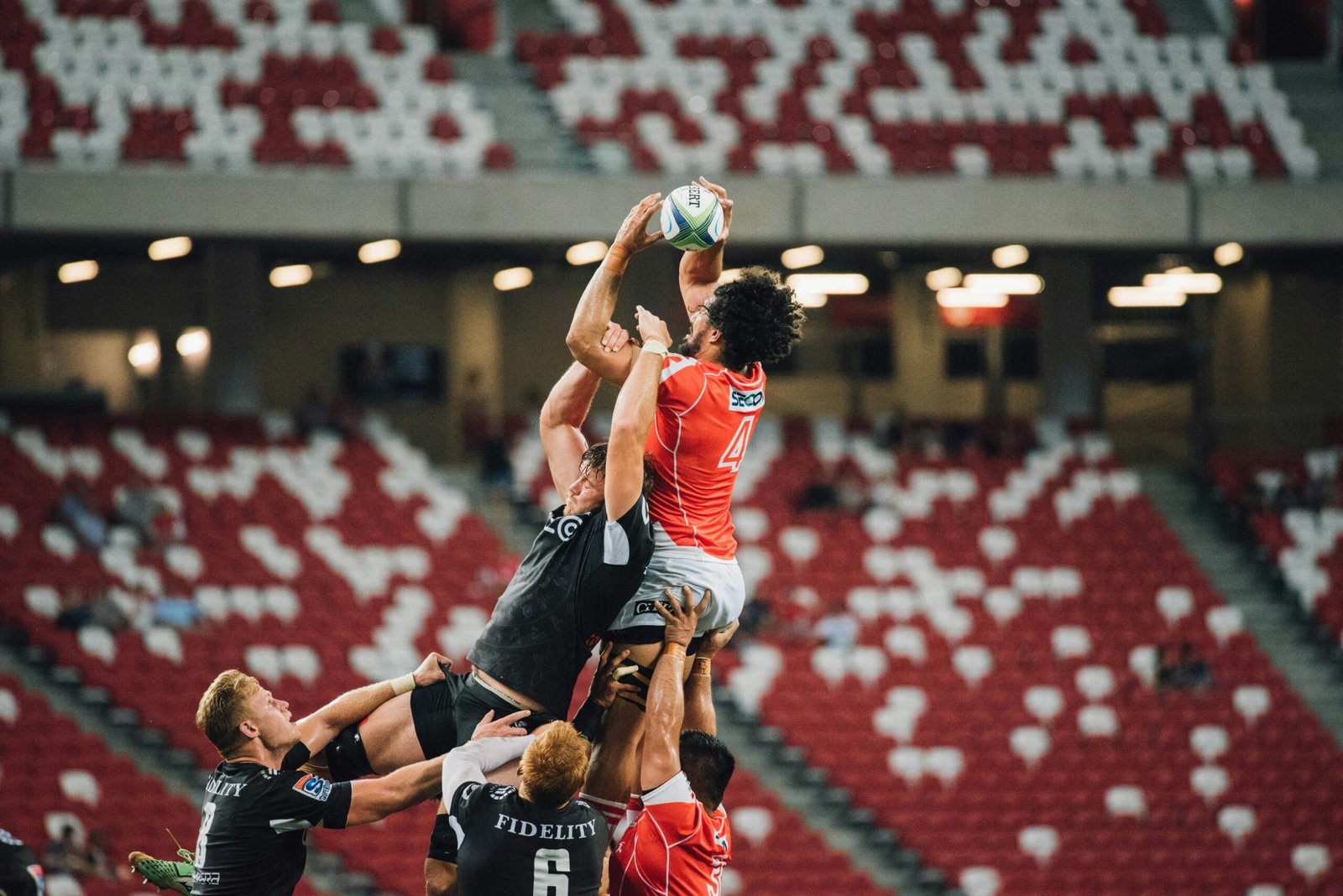Introduction to Indian Sports Goods Exports
The Indian sports goods industry has emerged as a vital component of the country’s economy, characterized by its diverse range of products which cater to both domestic and international markets.
With a growing emphasis on health and fitness among consumers, the demand for sports equipment and related goods has surged significantly.
This increasing interest not only stimulates local manufacturing but also positions India as a key player in the global sports goods trade.
In recent years, India has seen a marked improvement in its export from India, with various states specializing in the production of specific sports items such as cricket bats, badminton rackets, and a variety of fitness equipment.
Factors such as advancements in manufacturing techniques, enhanced quality standards, and competitive pricing have contributed to the rising export figures.
Countries across the globe are increasingly sourcing sports goods from India, attracted by the nation’s capability to produce high-quality items at affordable costs.
The year 2024 is particularly significant as it marks a pivotal point in the growth trajectory of Indian sports goods exports.
With the ongoing global events and increased investment in sports infrastructure within India, there is immense potential for market expansion.
Notably, international sporting events scheduled for 2024 will create opportunities for Indian manufacturers to showcase their products on wider platforms, further boosting exports.
Additionally, government initiatives aimed at promoting ‘Make in India’ are likely to enhance the competitiveness of Indian goods in foreign markets.
Overall, participation in the global sports goods market presents an opportunity not only for economic growth but also for India to be recognized for its diverse capabilities in sports manufacturing.
This dynamic landscape underscores the importance of the sports goods export sector as a growing contributor to India’s economic development and international standing.
Historical Trends in Sports Goods Exports
The Indian sports goods export industry has witnessed remarkable growth over the past decade, reshaping its presence in international markets.
The period from 2010 to 2020 marked a significant evolution, with exports climbing steadily due to increasing global demand for sports equipment and apparel.
During this time, India emerged as a notable player in the global sports goods market, thanks in part to favorable government policies and initiatives aimed at promoting manufacturing and exports from India.
In the early 2010s, the export from India primarily consisted of traditional sports goods, including cricket equipment and footballs. However, there was a pronounced shift toward a more diversified portfolio.
As the global sports industry began to expand, Indian manufacturers adapted by introducing innovative products, encompassing not just conventional items but also specialized gear catering to emerging sports.
This evolution was critical in maintaining competitiveness in an increasingly crowded marketplace.
Several major export destinations have contributed to the growth trajectory. The United States, Europe, and Australia have consistently ranked among the top markets for Indian sports goods.
These regions showcase a robust demand for quality sports equipment, which prompted Indian manufacturers to enhance their production processes.
Enhancements in technology and design have enabled Indian exporters to cater to varied consumer preferences and standards required in international markets.
The last several years have also seen a shift towards sustainable and eco-friendly materials, which has become a trend in sports goods production globally.
This has allowed Indian exporters to tap into new consumer segments that prioritize sustainability.
Overall, historical trends indicate that the export from India has not only adapted to meet global demands but has also strategically positioned itself to capitalize on opportunities in an ever-evolving market landscape.
Market Opportunities for 2024
The year 2024 presents numerous market opportunities for sports goods exported from India, driven by a combination of evolving consumer behaviors, technological advancements, and increased demand for quality sporting equipment.
One of the most significant factors contributing to this growth is the heightened global demand for sports goods, which has been amplified by a rising awareness of health and fitness among consumers.
This shift toward healthier lifestyles has led to increased participation in sports and fitness activities, consequently fueling the need for quality sports equipment and apparel.
As a result, the potential for expanding exports from India has become more pronounced.
The COVID-19 pandemic has also played a crucial role in reshaping consumer purchasing patterns. With lockdowns and restrictions in place, many consumers turned to online shopping as a viable alternative.
This shift has paved the way for Indian sports goods manufacturers and exporters to leverage the burgeoning e-commerce market.
By establishing robust online platforms and partnerships with global e-commerce giants, Indian exporters can reach broader customer bases, thereby enhancing their export capabilities.
In addition to tapping into e-commerce, Indian sports goods exporters should focus on identifying potential target markets that show promise for growth.
Countries in Southeast Asia and the Middle East are emerging markets where interest in sports is burgeoning. These regions present significant opportunities for Indian exporters to establish a foothold and expand their market share.
Furthermore, developed markets such as the United States and Europe continue to show demand for diverse sporting goods, presenting another lucrative avenue for Indian exports.
Moreover, increasing collaborations between Indian manufacturers and international brands can facilitate entry into new markets and improve competitiveness.
By aligning with global trends and consumer preferences, Indian exporters can effectively position themselves to seize the myriad opportunities that 2024 presents in the sports goods sector.
The Role of Innovation in Growth
Innovation plays a pivotal role in driving growth within the Indian sports goods industry, particularly as export from India continues to gain momentum.
The adoption of cutting-edge technologies and sustainable practices has enabled Indian manufacturers to enhance product quality and cater to the evolving demands of the international market.
By integrating innovative designs and materials, Indian companies are positioning themselves as competitive players in the global sports equipment segment.
One significant area of development is the use of advanced materials that improve performance while minimizing environmental impact.
Brands are now utilizing lightweight, durable composites that not only enhance the functionality of sports goods but also align with global sustainability initiatives.
For instance, the introduction of biodegradable tennis balls and eco-friendly apparel demonstrates how the Indian sports industry is addressing environmental concerns while meeting consumer preferences.
These innovations have not only opened new avenues for export from India but have also garnered attention at international trade fairs and exhibitions.
Additionally, Indian manufacturers are leveraging technology to create smart sports goods equipped with features that track performance metrics.
Such innovations include smart wearables that monitor athletic performance and provide feedback to users.
Incorporating features like GPS tracking and biometric sensors has made Indian sports products appealing to both professional athletes and fitness enthusiasts worldwide.
This tech-driven approach is vital for capturing the attention of international markets and establishing a strong export presence.

Moreover, collaboration between startups and established companies is fostering a culture of innovation within the Indian sports goods sector.
Startups are bringing fresh ideas and agility to product development, while established players provide the resources and market knowledge necessary for scaling innovations.
This partnership approach accelerates the creation of competitive products that resonate with international consumers, ultimately strengthening India’s position in the global sports goods market.
Government Initiatives and Support
The Indian government has implemented a spectrum of initiatives aimed at bolstering the country’s sports goods exports.
Recognizing the potential of this sector, the government has rolled out strategic policies designed to enhance production capabilities while facilitating market accessibility on a global scale.
The focus on promoting exports from India in the sports goods sector demonstrates a commitment to making the country a significant player in the global market.
One of the primary strategies involves the establishment of the Production-Linked Incentive (PLI) scheme.
This program is tailored to incentivize manufacturers by providing financial support contingent upon achieving specified production targets.
Such initiatives not only propel domestic manufacturing but also foster competitive pricing, thus making Indian sports goods attractive for international buyers.
Moreover, the PLI scheme aligns with the broader Make in India initiative, which aims to transform India into a manufacturing hub.
Additionally, the government has engaged in various trade agreements with nations to facilitate smoother export processes.
These agreements are aimed at reducing tariffs and eliminating trade barriers, thus simplifying the dynamics of exporting sports goods from India.
By actively participating in international trade forums and negotiations, India is working to establish itself as a reliable source of quality sports equipment.
Financial assistance programs have also been launched to support small and medium enterprises (SMEs) within the sports goods industry.
These funding options allow businesses to enhance their production capabilities, innovate their product lines, and meet international standards.
Furthermore, initiatives promoting skill development in the manufacturing sector aim to create a robust workforce equipped to support increased export activities.
Through these concerted efforts, the Indian government is laying a strong foundation for a thriving sports goods export sector, enabling local manufacturers to seize opportunities in the international market while contributing to the nation’s economic growth.
Challenges Facing Indian Sports Goods Exporters
As the landscape of sports goods exports from India evolves, exporters encounter several significant challenges that hinder their competitiveness in the global market.
One of the primary concerns is quality control. Many international buyers expect high standards of manufacturing and materials, and any lapse in quality can lead to damaged reputations and lost contracts.
Indian exporters must implement rigorous quality assurance processes to meet these international benchmarks consistently.
Another pressing issue is pricing competitiveness. Indian sports goods often face stiff competition from manufacturers in countries like China and Vietnam, which can produce similar goods at lower prices.
This is particularly challenging for small and medium-sized enterprises (SMEs) in India that may not have the same economies of scale as their competitors.
To combat this, Indian exporters need to adopt innovative production techniques and explore cost-effective raw materials without compromising on quality.
Intellectual property concerns represent another challenge for Indian exporters in the sports goods sector.
There is often a lack of awareness or understanding of intellectual property rights among manufacturers, leading to risks of patent infringement or unauthorized copying of designs.
This issue not only affects the profitability of legitimate businesses but also discourages investments in research and development.
Exporters should focus on building awareness about intellectual property laws and take proactive measures to protect their designs and innovations.
Finally, logistical hurdles present significant obstacles in the export process. Inadequate infrastructure, particularly in rural areas where many manufacturing units are based, can result in delays and increased transportation costs.
Indian sports goods exporters should collaborate with logistics experts to streamline their supply chain and adopt technological advancements to improve efficiency.
By addressing these challenges, Indian sports goods exporters can enhance their ability to compete in the global market, ultimately leading to sustained growth in exports from India.
Consumer Trends in Sports Equipment and Apparel
The landscape of consumer preferences for sports equipment and apparel has undergone significant transformations, particularly in the context of the growing export from India.
Increasingly, consumers are prioritizing sustainability in their purchasing decisions, leading to a more conscientious approach toward the products they choose.
This trend is notable not only within India but also on a global scale, where environmentally-friendly products are gaining popularity among athletes and fitness enthusiasts alike.
Brands are responding by adopting eco-friendly materials and sustainable practices, which appeal to a market increasingly aware of environmental impact.
Additionally, brand consciousness continues to play a pivotal role in consumer behavior. With many consumers seeking out reputable brands known for quality and innovation, the competitive landscape in sports goods has intensified.
This is especially relevant in the Indian market, where local manufacturers are striving to establish strong brand identities.
By fostering brand loyalty through effective marketing strategies and high-quality products, Indian exporters can tap into the growing demand for reliable and recognizable sports equipment and apparel.
Furthermore, the increasing emphasis on health and fitness has significantly influenced purchasing decisions.
As more individuals embrace active lifestyles, the demand for sports gear that supports fitness activities has surged.
Consumers are now looking for products that not only enhance performance but also provide comfort and durability.
This shift aligns with the potential for export from India, as manufacturers can focus on creating innovative products tailored to these evolving consumer needs.
With the right approach, Indian sports goods can capture a considerable share of the global market.
In conclusion, understanding these consumer trends is essential for manufacturers and exporters alike.
By aligning their strategies with sustainability, brand awareness, and health motivations, Indian sports goods exporters can better position themselves for success in an increasingly competitive global landscape.
Case Studies of Successful Indian Brands
In recent years, several Indian sports goods brands have made significant strides in the export market, illustrating their ability to adapt to global trends and demands.
One noteworthy example is Nivia Sports, which has successfully carved a niche in the international arena through its focus on quality and innovation.
Nivia has enhanced its product range, introducing high-quality cricket gear and athletic footwear that have gained popularity in countries like Australia and South Africa.
Their commitment to research and development has enabled them to create products that meet international quality standards, ultimately leading to a substantial increase in exports from India.
Another prominent brand, Cosco India, has also optimized its exports by employing strategic partnerships and collaborations.
By aligning itself with international distributors and retailers, Cosco has expanded its reach in markets such as the United States and Europe.
Their diverse portfolio includes a wide array of sports equipment, such as basketballs, footballs, and volleyballs.
Through targeted marketing campaigns, Cosco has successfully communicated its brand value, ensuring that consumers recognize its commitment to quality and affordability.
Speedo India serves as a case study of how brands can capitalize on trends in sports apparel. By focusing on sustainability and eco-friendly materials, Speedo has turned consumer interests towards its products, fostering a positive brand image.
The company has utilized digital marketing strategies to engage with international audiences, further boosting its export growth.
Such initiatives have rendered Speedo a competitive player in the global swimwear market, exemplifying how established brands can adapt to changing consumer demands while ensuring that their export from India remains robust.
These case studies reflect the dynamism and potential of Indian sports goods manufacturers, highlighting the various strategies that have enabled them to make significant impacts in the export market.
Future Outlook for Indian Sports Goods Exports
The landscape of sports goods exports from India is poised for significant transformation in the coming years.
As we look ahead to the subsequent years post-2024, it becomes evident that numerous factors will propel the industry toward continued growth.
The government’s initiatives aimed at enhancing manufacturing capabilities and easing export processes are likely to bear fruit, thus facilitating a smoother export journey for Indian manufacturers.
This proactive approach is expected to attract more global buyers looking to leverage the diverse and quality sports equipment produced in India.
Emerging markets present a remarkable opportunity for Indian sports goods exports.
Regions like Southeast Asia, Africa, and South America are witnessing an increase in sports activities, driven by rising health awareness and the popularity of various games.
These markets are not only expanding in terms of participation rates but also in their purchasing power, and India’s reputation as a reliable source of quality sports goods can cater to this growing demand.
Furthermore, as countries continue to invest in sporting infrastructure, the potential for Indian exports to become integral to these developments is substantial.
Technological advancements and innovations in manufacturing processes will also redefine the competitive landscape of Indian sports goods in the international arena.
Enhanced product quality, coupled with sustainable practices and materials, will position Indian products favorably among environmentally-conscious consumers globally.
Notably, the adaptation of smart technologies within sports equipment may open new avenues for export, appealing to tech-savvy markets.
With the ongoing emphasis on enhancing brand visibility and participation in international trade fairs, Indian sports goods are set to attract considerable attention.
In conclusion, the projection for sports goods exports from India in the upcoming years remains optimistic, with anticipated growth trajectories supported by emerging markets and innovative practices.
This evolving sector presents an encouraging outlook for manufacturers, stakeholders, and the economy at large.


 By Vijay
By Vijay



No comment yet, add your voice below!